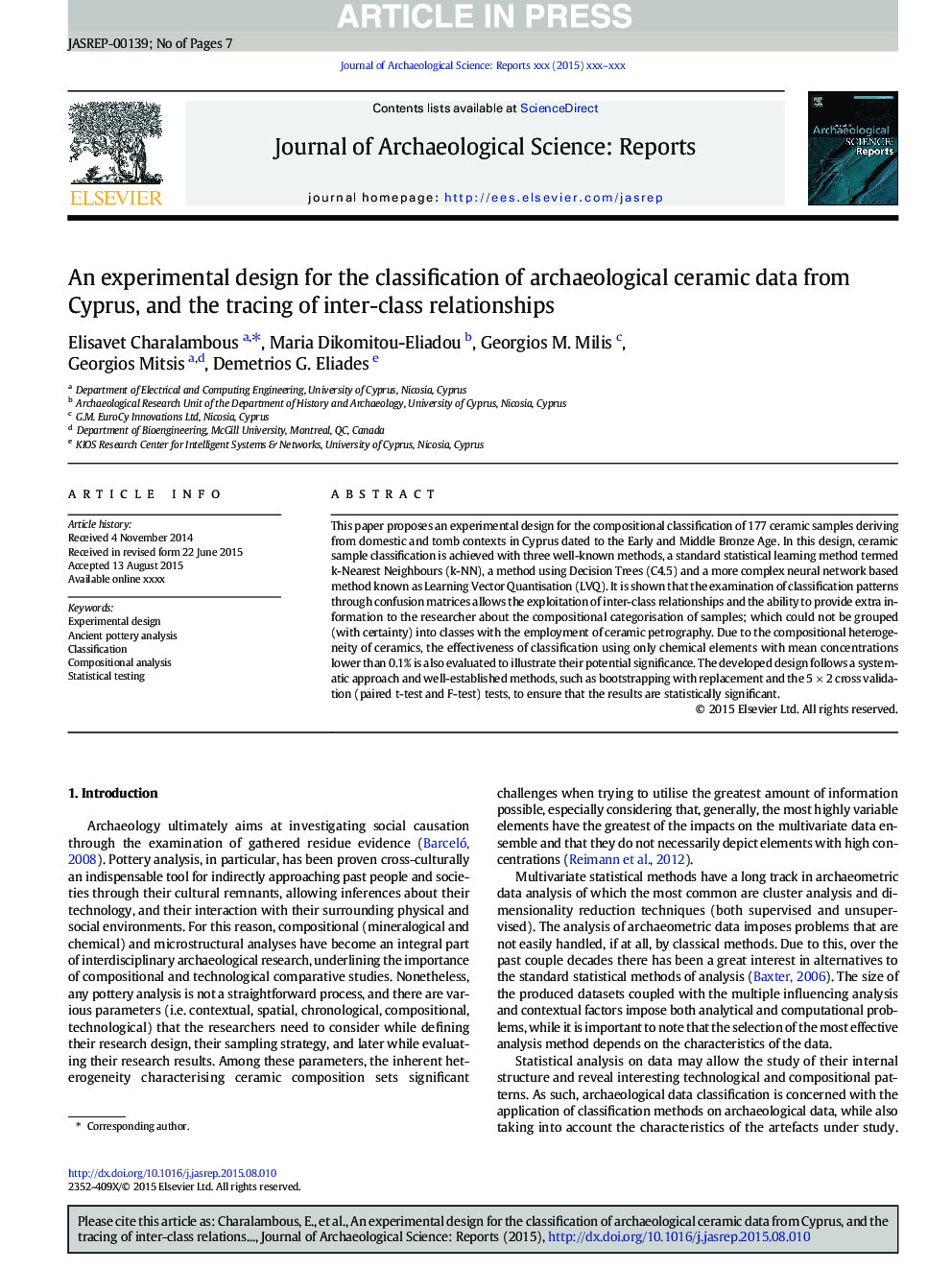| Article ID | Journal | Published Year | Pages | File Type |
|---|---|---|---|---|
| 7445396 | Journal of Archaeological Science: Reports | 2016 | 7 Pages |
Abstract
This paper proposes an experimental design for the compositional classification of 177 ceramic samples deriving from domestic and tomb contexts in Cyprus dated to the Early and Middle Bronze Age. In this design, ceramic sample classification is achieved with three well-known methods, a standard statistical learning method termed k-Nearest Neighbours (k-NN), a method using Decision Trees (C4.5) and a more complex neural network based method known as Learning Vector Quantisation (LVQ). It is shown that the examination of classification patterns through confusion matrices allows the exploitation of inter-class relationships and the ability to provide extra information to the researcher about the compositional categorisation of samples; which could not be grouped (with certainty) into classes with the employment of ceramic petrography. Due to the compositional heterogeneity of ceramics, the effectiveness of classification using only chemical elements with mean concentrations lower than 0.1% is also evaluated to illustrate their potential significance. The developed design follows a systematic approach and well-established methods, such as bootstrapping with replacement and the 5Â ÃÂ 2 cross validation (paired t-test and F-test) tests, to ensure that the results are statistically significant.
Related Topics
Social Sciences and Humanities
Arts and Humanities
History
Authors
Elisavet Charalambous, Maria Dikomitou-Eliadou, Georgios M. Milis, Georgios Mitsis, Demetrios G. Eliades,
